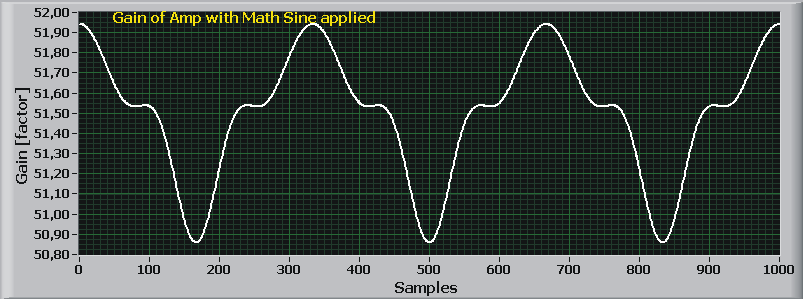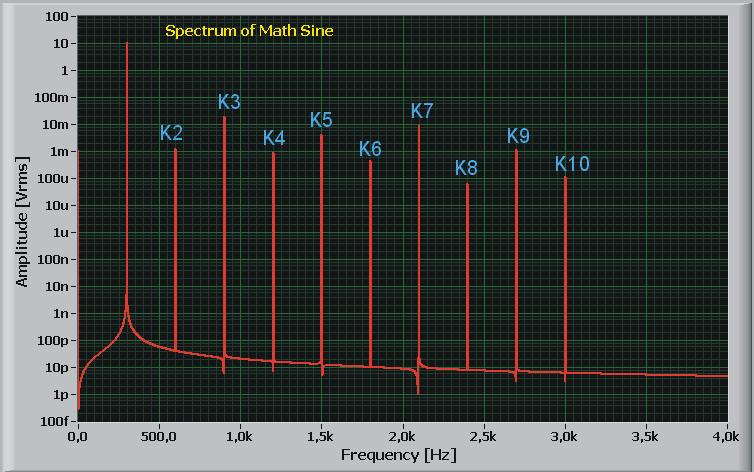|
Figure 1: adjusted output power |
Figure 2&3: adjusted input voltages and the resulting output voltages |
Figure 4&5: left picture shows the Gain vs. Input Voltage. Right figure Gain as Polynominal Fit Funktion |
|
The amplitude measurement system measured 60 different output power conditions with 4 ohm load Starting at maximum output power (1V below clipping, 15.7 Vrms). Volume control at 70%. To set the system first measured frequency was 200 Hz, in the next step the measured frequency of 300 Hz. Lowest Output power was 60mW. |
Input and output voltage. Vin max 306mVrms, Vinmin 10mVrms. Voutmax 15.7 Vrms, Voutmin 0.5 Vrms. The 60 steps should be enough to measure the whole power dynamic of the amplifier. The measurement range of both voltmeters remain unchanged. |
This voltmeter can measure only positive true rms values, for negative voltages the positives were mirrored on the y-axis. In reality this would be an amplifier with the same behavior of the negative and the positive half cycle, with xactly the same open loop. That's not realistic but ok for this model. The right figure does a 9th.order polynominal fit of the measurement values. |
|
Figure 5 similar to the measured values in Figure 4. I did the polynom to 9th. order, this should be enough. |
||
|
copyrights at Ralf Ohmberger |
||


















